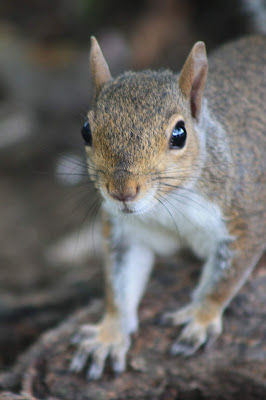The Yellow Hammer, often spelled "Yaller Hammer" or some variation thereof, is the granddaddy of southern trout flies. It's old enough that no one knows its true origins; some speculate that it may have been tied on bone hooks by the Cherokee Indians before the arrival of Europeans. The fly is named for the bird whose feathers were used before the Migratory Bird Treaty Act put such traditional materials off-limits: a yellowhammer is a yellow-shafted flicker, Colaptes auratus auratus. Nowadays dyed feathers from other birds are used. The fly comes in various forms, both wet and dry; this one from Brookings Fly Shop in Cashiers, North Carolina, with its blunt-clipped "hackle" (originally a flicker primary), strongly resembles the original. It's an attractor fly, imitative of nothing in particular but buggy enough in profile, and the flash of yellow seems to entice brook trout readily.
Another fly incorporating yellow, and also appearing in various guises, is the Mr. Rapidan. It is far less ancient and mysterious than the Yellow Hammer, originating in Edinburg, Virginia—close by Shenandoah National Park—in the early 1970s. According to its inventor, whose account can be read here, the yellow on the Mr. Rapidan was incorporated for visibility to the angler; seen from below, the trout's perspective, it imitates some of the brown mayflies found on nearby mountain streams in the early spring.
The final fly in our set is pictured with a couple of its immediate ancestors. On the left is a Royal Coachman, a 19th-century American twist on an older fly of British origin: the Coachman became "royal" with the addition of a band of red floss, intended to enhance durability as well as add colour. At center is the 20th-century Royal Wulff, a bushy fly that floats better than the Coachman in rough water. On the right is the Tennessee Wulff, a variant in which the red floss is replaced with green. The green floss, more subtle than the red, is meant to be suggestive of food items such as inchworms and katydids, while the fly retains its generic mayfly profile.






































